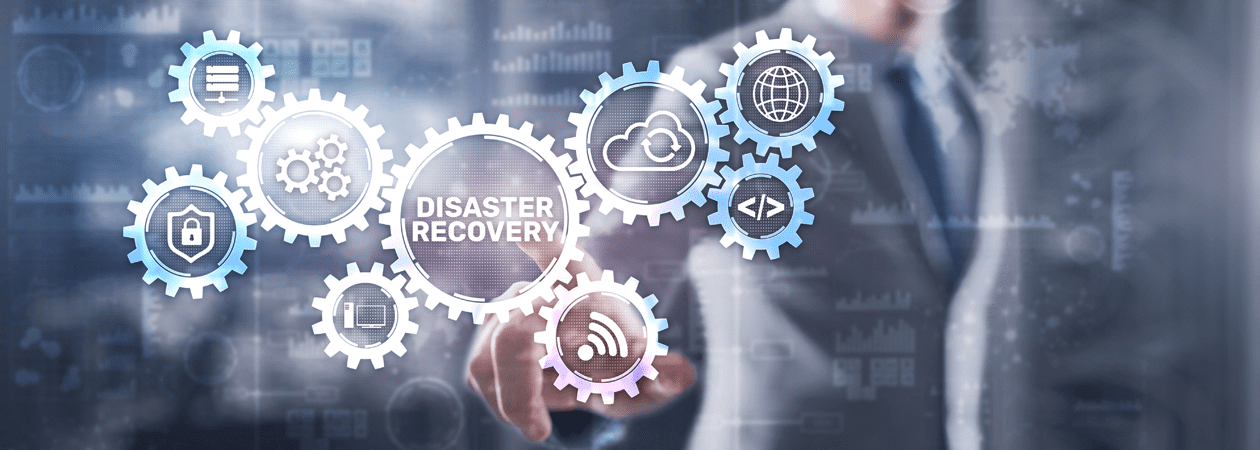
The modern business runs on IT and data. Both underpin every business function and act as revenue generators. But as IT becomes more valuable to your organization, protecting your investment with backup and disaster recovery solutions like Disaster Recovery as a Service (DRaaS) becomes even more critical.
What is DRaaS?
Disaster Recovery as a Service is a flexible and robust cloud computing backup solution delivered with the ease of Software as a Service (SaaS). The SaaS approach means organizations have a reliable and flexible backup solution without the hassle of owning, maintaining, and managing those resources. Brien Posey sums it up best in Conversational Disaster Recovery as a Service, co-sponsored by Veeam, “DRaaS is essentially a subscription-based disaster recovery service.”
DRaaS differs from a traditional backup solution that merely creates a copy of an organization’s data. With DRaaS, in the event of a disruption, an organization can simply switch over operations to the cloud allowing for business continuity.
The best disaster recovery (DR) services and DRaaS providers make it simple and easy to maintain business continuity and ensure data loss prevention via file syncing for your systems. However, as business data can often be fragmented between different systems, applications, and IT infrastructure, extra attention to detail is required to prevent data loss and ensure operational continuity.
Even the most severe failure can result in minimal disruption if you have good continuity and recovery planning. DRaaS providers work with the most complex data sets, often within native or hybrid clouds, to ensure business continuity in the event of loss or failure of data and critical systems.
Expect the Unexpected
DRaaS can help protect your business from any number of threats, including:
- Severe Weather
Because DRaaS is a cloud-based solution, you’ll be able to access your data from any location with an internet connection. If a natural disaster makes your office unusable, your business can continue remotely.
- Cybersecurity Threats
Data breaches are a major concern for businesses, and DR and DRaaS can help protect against them. Malware and ransomware are a particularly dangerous and prevalent threat, but human error and natural disasters can just as easily disrupt applications, workflows, and revenue production.
- WFH Security
As remote working has become a regular part of business, DRaaS is powerful and flexible enough to handle the demands of the modern workplace.
The Importance of SLAs in DRaaS
The key element to any DR plan is will it work when needed. Best practices indicate that DR plans be tested every six months. Without that testing, there is no assurance that your organization can recover from an event. An experienced and comprehensive DRaaS provider will assist with DR testing and offer guarantees of successful testing along with solid service level agreements (SLAs) to back up their DR capabilities.
An SLA should clearly document the recovery plan’s RTO and RPO. A Recovery Time Objective (RTO) is the time that elapses between an incident and the resumption of critical business processes. A Recovery Point Objective (RPO) defines how much data it can afford to lose measured in time. These are essential metrics for any DR plan, and the SLA should be clear about how the DRaaS provider will ensure these standards.
How DRaaS Provides Ransomware Protection
With the rise of ransomware, businesses must implement a bifurcated cybersecurity model to ensure long-term resiliency. The first branch comprises a business’s security program to prevent cyber incidents. At the same time, the second branch consists of all company preparations for recovery if the cybersecurity program fails. Both must receive equal care and attention in their planning and execution.
DRaaS falls into the second branch. DRaaS can help recover from a cyber event quickly, including ransomware. When paired with Backup as a Service (BaaS), which focuses on preserving data, DRaaS can offer fast recovery for parts of the IT ecosystem that haven’t yet been affected by malware or ransomware.
Additional Benefits of DRaaS
- DRaaS can free your internal IT team to focus on core operations and innovation.
- In business, time is money, and DRaaS can shorten your recovery time in the event of a disruption.
- DRaaS solutions are more cost-effective than fully in-house disaster recovery programs.
- Since DRaaS is a cloud-based solution, you can run your business from anywhere–even in the event of a natural disaster.
- By choosing a DRaaS provider, you benefit from their years of experience and knowhow. This assistance can help your company avoid costly DR planning, testing, and execution mistakes.
DRaaS: Reliability is the Goal
A good disaster recovery plan should ensure the data protection and continuity of your business, no matter the type of disruption. This planning requires both due diligence and dialogue with all stakeholders to ensure that nothing is overlooked.
In searching for a DRaaS provider, an excellent first step is connecting with trusted peers to inquire about their solutions, ask what lessons they have learned, and seek out recommendations for managed DRaaS vendors.
After gathering information from vendors, compare their expertise, benefits, and results. Most importantly, talk to your business’s leadership about disaster recovery. It’s a business decision, not one for IT alone.
 About Chris
About Chris
As Chief Technology Officer at Coretelligent, Chris Messer is a transformational and strategic IT leader who establishes and leads Coretelligent’s technical vision and technological development. Click here to learn more about Chris.


